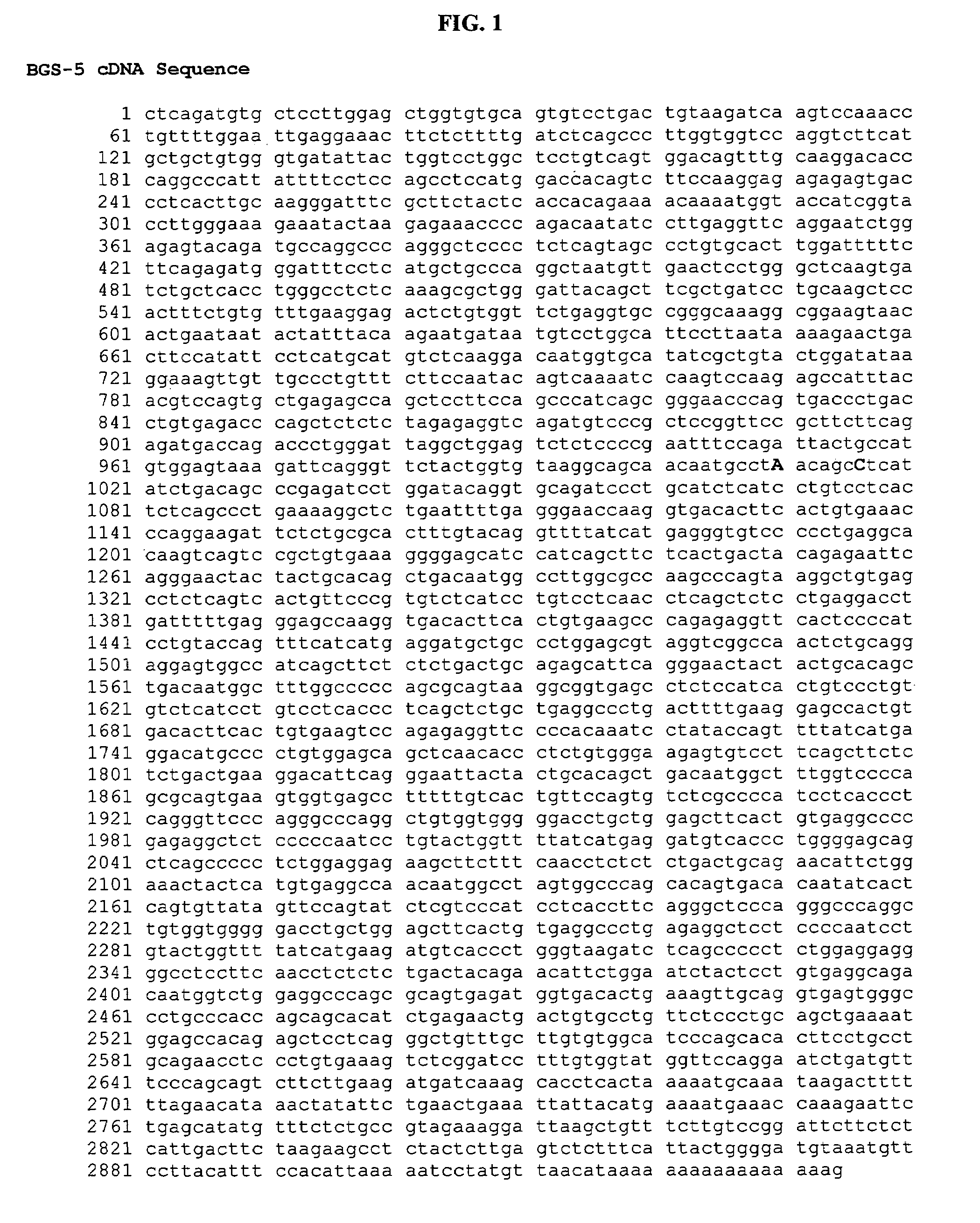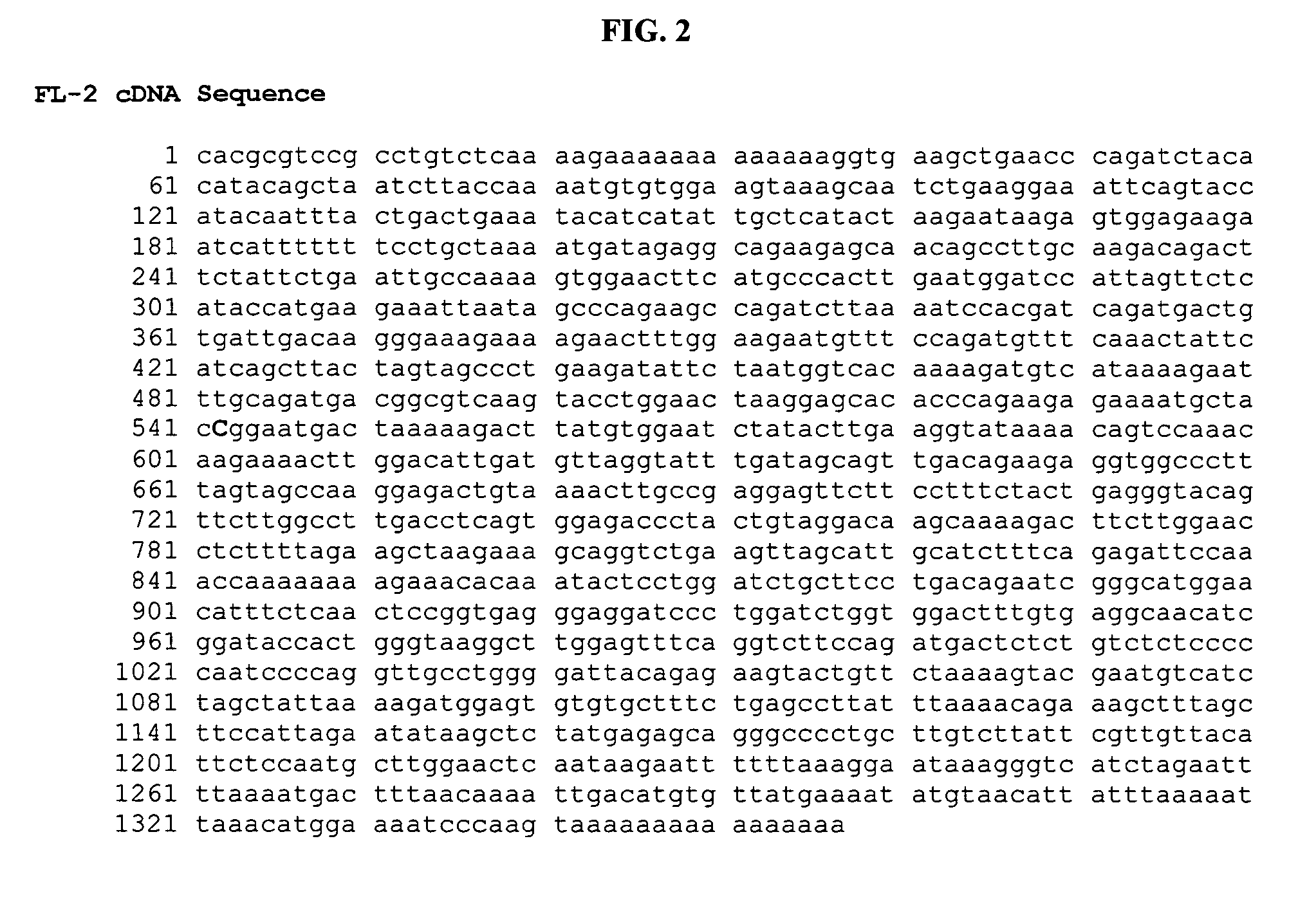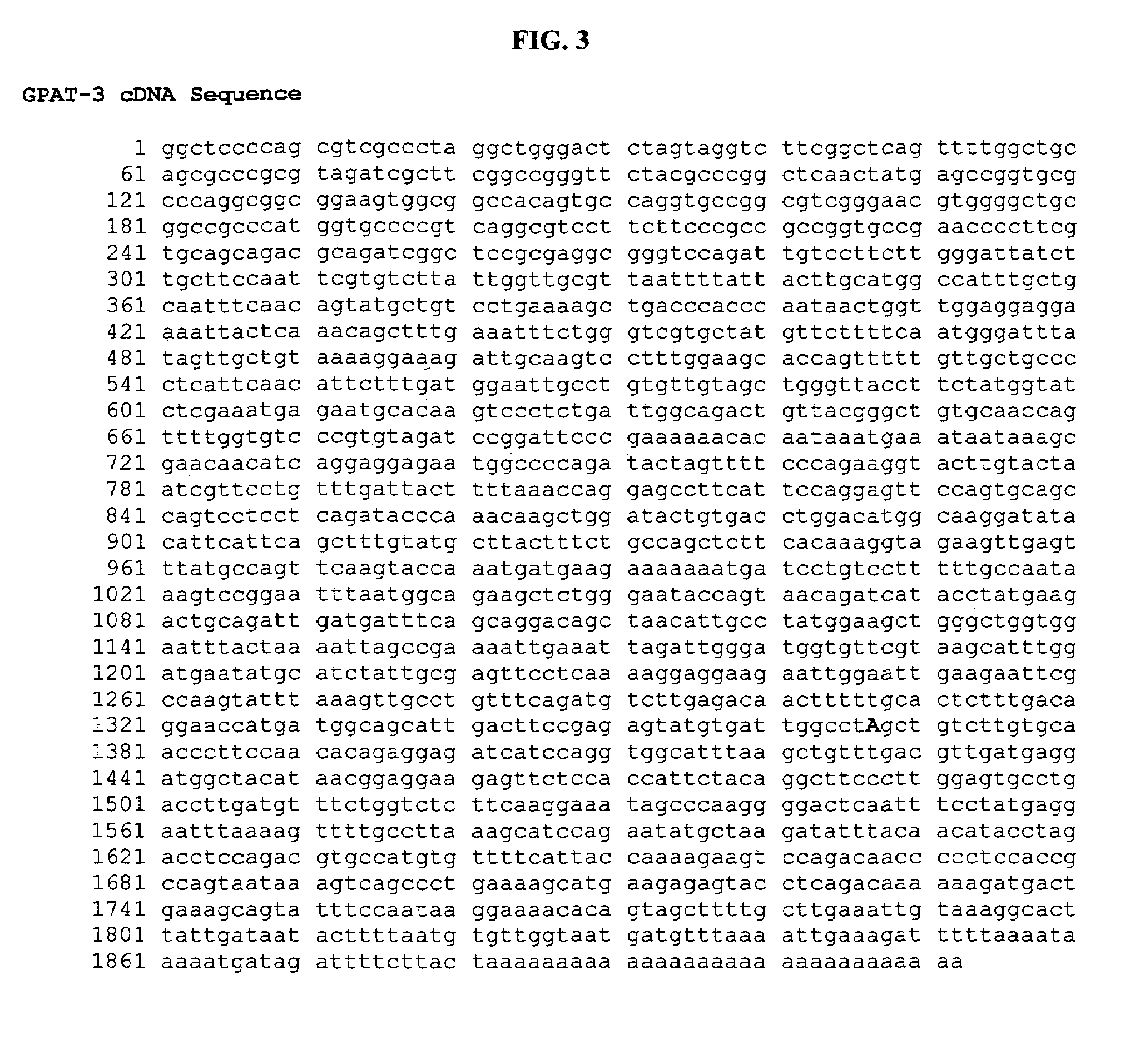Methods for diagnosing schizophrenia by detecting a polymorphism in the KalphaM1 gene
a polymorphism and gene technology, applied in the field of polypeptides, can solve the problems of limited number of polymorphisms identified to date, defective protein expression, and variable form confers a lethal disadvantage, so as to increase the ethnic accuracy of such genomic controls, increase statistical confidence in association data, and increase the effect of ethnic accuracy
- Summary
- Abstract
- Description
- Claims
- Application Information
AI Technical Summary
Benefits of technology
Problems solved by technology
Method used
Image
Examples
example 1
Method of Discovering the Single Nucleotide Polymorphisms (SNPs) of the Present Invention
[0400]Discovered cDNA's were aligned with their genomic “parent” clones using a computer program employing a BLAST-type algorithm. After the genomic clones were identified (usually AC# clones), the exon / intron boundaries of the gene of interest were then determined. The coding regions of these genes were then sequenced, in addition to any 5′ or 3′ UTR sequences. Sequencing primers (forward and reverse) were then designed to flank each exon / coding region of the gene using the Primer 3.0 software. Sequencing primers employed are shown in Table 4.
[0401]PCR was performed on ABI 9700 machines using the sequencing primers for each exon. PCR conditions were as follows:
[0402]1) 94 degrees C. for 2 minutes
[0403]2) 94 degrees C. for 30 seconds
[0404]3) 59 degrees C. for 1 minute
[0405]4) 72 degrees C. for 30 seconds
[0406]5) 72 degrees C. for 5 minutes
[0407]6) 4 degrees C. hold
[0408]Steps 2-4 were repeated f...
example 2
Engineering the Allelic Forms of a Candidate Gene of the Present Invention
[0417]Aside from isolating the allelic genes of the present invention from DNA samples obtained from a human population, as described herein, the present invention also encompasses methods of engineering the allelic genes of the present invention through the application of site-directed mutagenesis to the isolated native forms of the genes. Such methodology can applied to synthesize allelic forms of the genes comprising at least one, or more, of the encoding SNPs of the present invention (e.g., silent, missense)—for example at least 1, 2, 3, or 4 encoding SNPs for each gene.
[0418]As described herein, the process of isolating a novel allele of the present invention is within the ordinary skill of an artisan trained in the molecular biology arts. Nonetheless, a detailed exemplary method of engineering at least one of the alleles to comprise an encoding and / or non-coding polymorphic nucleic acid sequence, in this...
example 3
Method of Genotyping a SNP of the Present Invention
(a) Genomic DNA Preparation
[0437]Genomic DNA samples for genotyping can be prepared using the PURIGENE™ DNA extraction kit from Gentra Systems (Minneapolis, Minn., USA). After preparation, DNA samples can be diluted to a 2 ng / μl working concentration with TE buffer (10 mM Tris-Cl, pH 8.0, 0.1 mM EDTA, pH 8.0) and stored in 1 ml 96 deep well plates (VWR Scientific Products, West Chester, Pa., USA) at −20° C. until use.
[0438]Samples for genomic DNA preparations can be obtained from patients participating in a clinical study, or from other sources known in the art or otherwise described herein.
(b) Genotyping
[0439]The SNP genotyping reactions may be performed using the SNPSTREAM™ system (Orchid Bioscience, Princeton, N.J., USA) based on genetic bit analysis (Nikiforov et al., (1994) Nucl. Acid Res. 22:4167-75).
[0440]The regions including polymorphic sites can be amplified by the polymerase chain reaction (PCR) using a pair of primers (O...
PUM
| Property | Measurement | Unit |
|---|---|---|
| Tm | aaaaa | aaaaa |
| pH | aaaaa | aaaaa |
| Tm | aaaaa | aaaaa |
Abstract
Description
Claims
Application Information
 Login to View More
Login to View More - R&D
- Intellectual Property
- Life Sciences
- Materials
- Tech Scout
- Unparalleled Data Quality
- Higher Quality Content
- 60% Fewer Hallucinations
Browse by: Latest US Patents, China's latest patents, Technical Efficacy Thesaurus, Application Domain, Technology Topic, Popular Technical Reports.
© 2025 PatSnap. All rights reserved.Legal|Privacy policy|Modern Slavery Act Transparency Statement|Sitemap|About US| Contact US: help@patsnap.com



